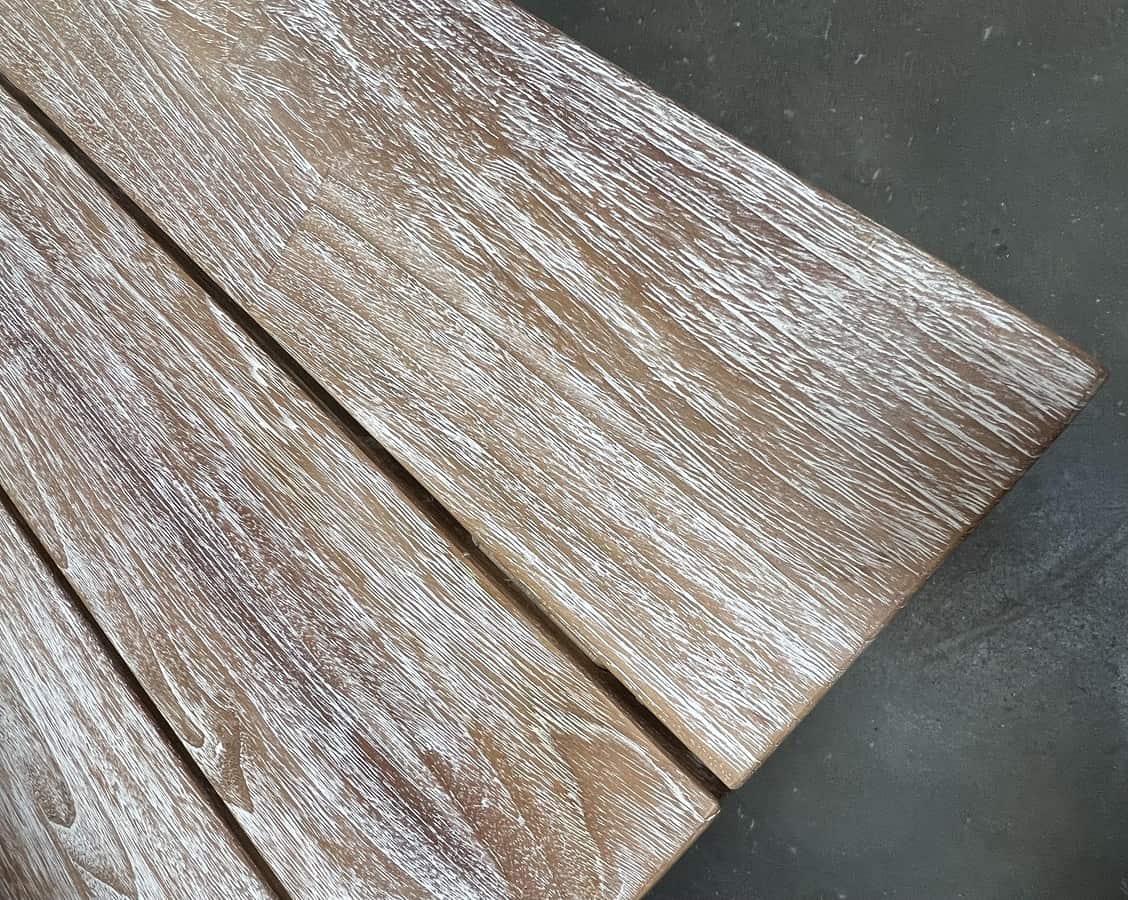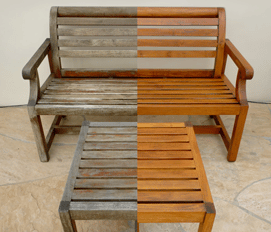The natural beauty and durability of teak wood make it a prized possession, but exposure to the elements can take its toll. This article provides a comprehensive guide to restoring teak wood, enabling you to revitalize its appearance and prolong its lifespan. We’ll delve into the essential steps, from assessment to protection, ensuring your teak surfaces regain their golden glory.
Understanding Teak’s Unique Character

Before diving into the restoration process, it’s crucial to understand what makes teak so special and why it requires a tailored approach. Its natural oils, responsible for its weather resistance and rich color, are also the key to successful restoration. Appreciating these properties will inform your decisions throughout the project.
The Science Behind Teak’s Durability
Teak’s exceptional durability stems from its high density and naturally occurring oils, specifically tectoquinones. These oils act as a natural water repellent, protecting the wood from rot, decay, and insect infestation. Unlike many other woods that require regular treatment with preservatives, teak’s inherent properties make it exceptionally resilient. However, over time, exposure to sunlight, rain, and temperature fluctuations can deplete these oils, leading to a grayed and weathered appearance. Understanding this process is key to properly restoring teak wood.
Think of teak like a fine leather. It needs care to maintain its suppleness and luster. The challenge isn’t just cleaning the surface, but replenishing the lost oils and protecting the wood from further damage. Many commercially available teak cleaners strip away the remaining oils, exacerbating the problem. This is why a nuanced approach, considering the specific condition of the teak and selecting appropriate products, is so important.
Assessing the Condition of Your Teak
The first step in restoring teak wood is a thorough assessment. Examine the teak surface for:
- Graying: This is a common sign of weathering and oil depletion.
- Cracking: Small cracks can develop due to expansion and contraction.
- Splintering: This indicates significant surface damage.
- Stains: Look for water stains, mildew, or other discolorations.
Consider how long the teak has been exposed to the elements and the type of exposure. Teak furniture on a covered porch will require a different approach than teak decking exposed to direct sunlight and saltwater. The extent of the damage will dictate the level of restoration needed, from a simple cleaning and oiling to more extensive sanding.
Avoiding Common Teak Restoration Mistakes
One of the biggest mistakes people make when restoring teak wood is using harsh chemicals or aggressive sanding techniques that remove too much of the wood’s natural oils. This can leave the teak dry, brittle, and more susceptible to damage. Another common mistake is using the wrong type of oil or sealant. Some products create a sticky, unattractive finish that attracts dirt and grime.
Always test any cleaning solution or oil on a small, inconspicuous area first to see how it reacts with the teak. Be patient and avoid rushing the process. Proper preparation and careful execution are essential for achieving a beautiful and long-lasting finish. I’ve seen countless projects ruined by people trying to take shortcuts or using products that are too harsh. Remember, the goal is to enhance the teak’s natural beauty, not to transform it into something it’s not.
Cleaning and Preparing the Surface

A clean, prepared surface is the foundation for any successful teak restoration. This stage involves removing dirt, grime, and any existing finishes, ensuring the teak is ready to absorb new oil and protection.
Gentle Cleaning Methods for Teak
Avoid harsh chemicals like bleach or strong detergents, as they can strip the teak of its natural oils and cause discoloration. Instead, opt for gentle cleaning methods using mild soap and water or specifically formulated teak cleaners. These cleaners are designed to remove dirt and grime without damaging the wood. Apply the cleaner with a soft brush or sponge, working in the direction of the grain. Rinse thoroughly with clean water and allow the teak to dry completely before proceeding to the next step.
Pressure washing is another option, but it should be used with caution. Too much pressure can damage the wood fibers and create an uneven surface. If you choose to pressure wash, use a low-pressure setting and a wide-angle nozzle. Keep the nozzle moving and avoid concentrating the spray on any one area for too long. Personally, I prefer hand-cleaning methods, as they give me more control and allow me to avoid any potential damage.
Sanding Techniques for Smoothness
Sanding is often necessary to remove graying, stains, and minor imperfections. Start with a coarser grit sandpaper (e.g., 80-grit) to remove the top layer of damaged wood. Then, gradually move to finer grits (e.g., 120-grit, 220-grit) to create a smooth, even surface. Always sand in the direction of the grain to avoid scratching the wood.
For larger surfaces, an orbital sander can be used to speed up the process. However, be careful not to apply too much pressure or stay in one spot for too long, as this can create unevenness or swirl marks. Regular vacuuming as you sand will improve the finish.
Neutralizing and Drying Thoroughly
After cleaning and sanding, it’s crucial to neutralize the wood and allow it to dry completely before applying any oil or sealant. Wood neutralizers can help to remove any lingering cleaning agents on the surface. Using a wood-safe pH test kit confirms that the wood has returned to normal pH neutral of 5.0 to 6.5. Then use natural soap and water to clean the surface.
Allow the wood to dry for at least 24-48 hours in a well-ventilated area. The moisture content of the teak should be below 12% before applying any exterior coating. Using a moisture meter helps that you can pick up from any hardware store. Applying oil or finish to damp teak can trap moisture and lead to mildew growth or premature peeling. Before restoring teak wood, ensure that proper drying techniques have been adhered to.
Oiling and Protecting Your Teak

The final stage of restoring teak wood involves applying a protective finish to enhance its natural beauty and prevent future damage. Choosing the right oil or sealant and applying it correctly is essential for a long-lasting and attractive result.
Choosing the Right Teak Oil or Sealant
There are many different teak oils and sealants available on the market, each with its own advantages and disadvantages. Teak oil is a popular choice for its ability to penetrate the wood and enhance its natural color. However, teak oil typically requires more frequent applications. Teak sealers offer longer-lasting protection but may not penetrate the wood as deeply.
When choosing a product, consider the climate you live in, the type of exposure the teak will receive, and your personal preferences. Read the product label carefully and follow the manufacturer’s instructions for application. Avoid products that contain harsh chemicals or solvents, as these can damage the teak. High-quality teak oils are superior choices for restoring teak wood.
Applying Oil for Optimal Absorption
Apply the teak oil or sealant with a clean brush or cloth, working in the direction of the grain. Apply thin, even coats, allowing the product to penetrate fully into the wood. Avoid applying too much oil, as this can create a sticky, unattractive finish. After each coat has been applied, wait 15-30 minutes and wipe any excess oil.
Allow each coat to dry completely before applying the next. Typically, two to three coats are sufficient for optimal protection. With sufficient and proper oiling of the teak wood, you are restoring teak wood for the long-term.
Regular Maintenance and Long-Term Care
To keep your teak looking its best, it’s important to perform regular maintenance. Clean the teak regularly with mild soap and water to remove dirt and grime. Reapply teak oil or sealant as needed, typically every 6-12 months, depending on the exposure to the elements.
Protect your teak furniture from direct sunlight and rain whenever possible. Using furniture covers or storing items indoors when not in use can significantly extend their lifespan. Avoid placing hot objects directly on teak surfaces, as this can cause staining or damage. Regular maintenance is an integral part of successfully restoring teak wood.
Weatherproofing Teak Furniture

Ensuring your teak furniture is correctly weatherproofed goes hand-in-hand with restoration. The best practices involve understanding the various coatings available and how they interact with teak’s unique properties to protect against weather extremes.
Understand Weather Patterns and Furniture Placement
Before applying any weatherproofing treatments, consider your local weather patterns. High humidity and extreme temperature changes can accelerate weathering, demanding more robust protection. Position your teak furniture strategically to minimize exposure to direct sunlight and rain. For instance, placing items under a patio roof or awning can significantly reduce wear. If total coverage isn’t possible, orient items to limit exposure to the harshest afternoon sun.
Additionally, drainage is crucial. Make sure water doesn’t pool on surfaces, as standing water is a primary cause of deterioration, ultimately requiring restoring teak wood. Inclined surfaces, or furniture with good drainage, are preferable.
Weatherproofing Compounds: Exploring the Options
There are several commercial weatherproofing compounds designed to provide weather protection. These range from sealants to specialized oils, each with unique methods of application. Some products create a barrier on the wood’s surface, while others penetrate deeper to enhance natural resilience.
Before selecting a treatment, thoroughly cleanse the teak and allow it to dry completely. A test on a small, less visible area is advised. It helps determine the desired look and confirm that the treatment complements the restoring teak wood process.
DIY Weatherproofing Methods Using Natural Products
DIY enthusiasts can often resort to natural remedies to weatherproof teak. Linseed oil, due to its penetrating properties, is excellent for enhancing the wood’s natural water resistance. A mix of beeswax and mineral oil offers superb water repellency and gives UV protection from sunlight.
A well-prepared mixture of beeswax, mineral oil, and carnauba wax is an option that gives exceptional protection. Such formulations are generally easy to apply, eco-friendly, and can prolong the lifespan of your teak furniture without the harsh effects of chemical treatments. They also contribute to better restoring teak wood.
Preventing Future Damage to Teak
Preventing damage in the long run needs a proactive approach that involves simple but effective practices. Regular inspections, proper storage and immediate repairs are essential strategies for maintaining teak furniture and avoiding the need for extensive restoration work.
Regular Inspection and Preventative Maintenance
Regular checks help identify minor problems like small cracks or early signs of mold. Immediate action prevents these issues from spiraling into more severe damage. Cleaning the wood every few months with a soft brush and mild soap maintains the overall condition and helps prevent accumulation of harmful elements.
Consider using specialized teak protectors, such as UV-resistant covers, during periods of intense sunlight or heavy rain. These simple measures can significantly extend the lifespan of the teak without compromising its beauty or requiring frequent restoring teak wood.
Optimal Storage Solutions to Avoid Decay
Storage has a massive impact on extending the life expectancy of teak furniture. During the off-season or in harsher climates, storing teak inside, whether it’s in a garage or a covered shelter, can prevent weather-related damage. If indoor storage isn’t feasible, use waterproof covers that allow the wood to breathe.
Ensure that the storage area is well-ventilated to prevent moisture buildup, which can lead to rot and mold. Raising the furniture slightly off the ground using blocks or pallets also helps to prevent moisture absorption and promotes airflow. Appropriate teak storage solutions minimizes needing further restoring teak wood later.
Immediate Repair: Addressing Issues Early On
Addressing maintenance issues as soon as they arise prevents severe damage to your teak surfaces. Small cracks should be filled with suitable wood fillers made for outdoor use. Loose joints can be re-glued and tightened to ensure integrity. A protective finish can be reapplied as soon as fading or wear signs are detected.
Prompt action avoids expensive repairs and maintains beautiful, lasting teak furniture. It keeps the furniture safe, durable, and enjoyable for many years to come. Keeping a maintenance mentality saves the need for restoring teak wood.
FAQs about Restoring Teak Wood
What is the best oil to use on teak wood?
Teak oil is a popular choice, as it penetrates the wood and enhances its natural color. However, there are many different brands and formulations available, so it’s important to choose a high-quality product that is specifically designed for teak.
How often should I oil my teak furniture?
The frequency of oiling depends on the exposure to the elements. Generally, teak furniture should be oiled every 6-12 months. You may need to oil it more frequently if it is exposed to direct sunlight or rain.
Can I use bleach to clean teak wood?
No, bleach is not recommended for cleaning teak wood. It can strip the wood of its natural oils and cause discoloration. Use mild soap and water or a specifically formulated teak cleaner instead.
How can I remove stains from teak wood?
For mild stains, try using a solution of mild soap and water. For more stubborn stains, you may need to use a teak cleaner or a wood bleach. Always test any cleaning solution on a small, inconspicuous area first.
What is the best way to protect teak wood from the sun?
The best way to protect teak wood from the sun is to use a teak sealer or oil that contains UV inhibitors. You can also use furniture covers to protect the wood when it is not in use.
Video
Video source from youtube
Conclusion
Restoring teak wood is a worthwhile investment that enhances the beauty and longevity of your prized possessions. By understanding teak’s unique properties, following the proper cleaning and preparation techniques, and applying the right protective finish, you can revitalize its appearance and enjoy its golden glory for years to come. Remember, patience and attention to detail are key to achieving a successful and long-lasting result. Happy restoring!
Read Also : White Gold Marble Flooring – Luxury, Beauty, and Timelessness
